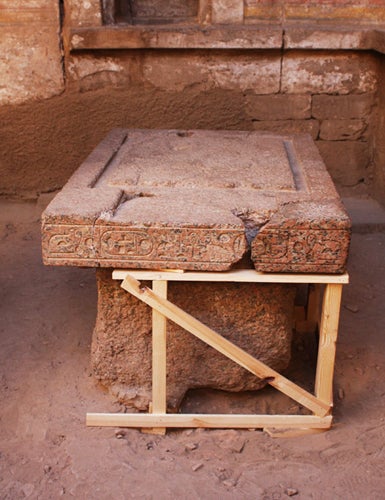Your support helps us to tell the story
From reproductive rights to climate change to Big Tech, The Independent is on the ground when the story is developing. Whether it's investigating the financials of Elon Musk's pro-Trump PAC or producing our latest documentary, 'The A Word', which shines a light on the American women fighting for reproductive rights, we know how important it is to parse out the facts from the messaging.
At such a critical moment in US history, we need reporters on the ground. Your donation allows us to keep sending journalists to speak to both sides of the story.
The Independent is trusted by Americans across the entire political spectrum. And unlike many other quality news outlets, we choose not to lock Americans out of our reporting and analysis with paywalls. We believe quality journalism should be available to everyone, paid for by those who can afford it.
Your support makes all the difference.Egypt's Minister of Culture Farouk Hosni and Dr. Zahi Hawass today returned a piece of red granite belonging to an ancient Egyptian temple to its rightful place - the base of Amenemhat I's naos.
Both officials are on an inspection tour along the Avenue of Sphinxes that connects the Temple of Luxor with that of Karnak, home to the Ptah temple where the naos is to be found.
The naos pieace was returned to Egypt last October by the Metropolitan Museum of Art in New York, after it was purchased by the Museum from an antiquities collector in New York.
Dr. Hawass described the Metropolitan Museum's action as "a great deed," as it is the first time a museum has bought an object for the purpose of returning it to its country of origin.
This action, asserted Hawass, highlights the deep cultural cooperation between the SCA and the Metropolitan Museum, as well as the Met’s devotion to return illegal antiquities to their homelands.
"It is also a kind gesture from the newly appointed Metropolitan director Thomas Campbell," said Hawass.
Hawass relates the story of this object, which started last October when Dr. Dorthea Arnold, the curator of the Egyptian section at the Metropolitan Museum, wrote an official letter to Dr. Hawass stating the Met’s desire to offer Egypt the piece; a part of the base of Amenemhat I's naos (1991-1962 BC).
The naos fragment was presented to the Metropolitan Museum by a collector in New York, who claimed he bought it in the 1970s. Dr. Arnold discovered the granite fragment must join with the naos in Karnak, which scholars believe was moved there during the New Kingdom. The piece was subsequently returned to Egypt, and will now be returned to its rightful place.
"We are not Pirates!" Zahi Hawass Anger at British Museum Rosetta Stone Loan Letter

Join our commenting forum
Join thought-provoking conversations, follow other Independent readers and see their replies
0Comments